Bake up a loaf of authentic Irish Brown Bread—hearty, nutty, and made the traditional way with simple, wholesome ingredients. This no-yeast recipe has been a staple in Irish kitchens for generations, delivering a crisp crust and soft, tender crumb. Perfect for slathering with butter, pairing with soups, or enjoying warm from the oven!
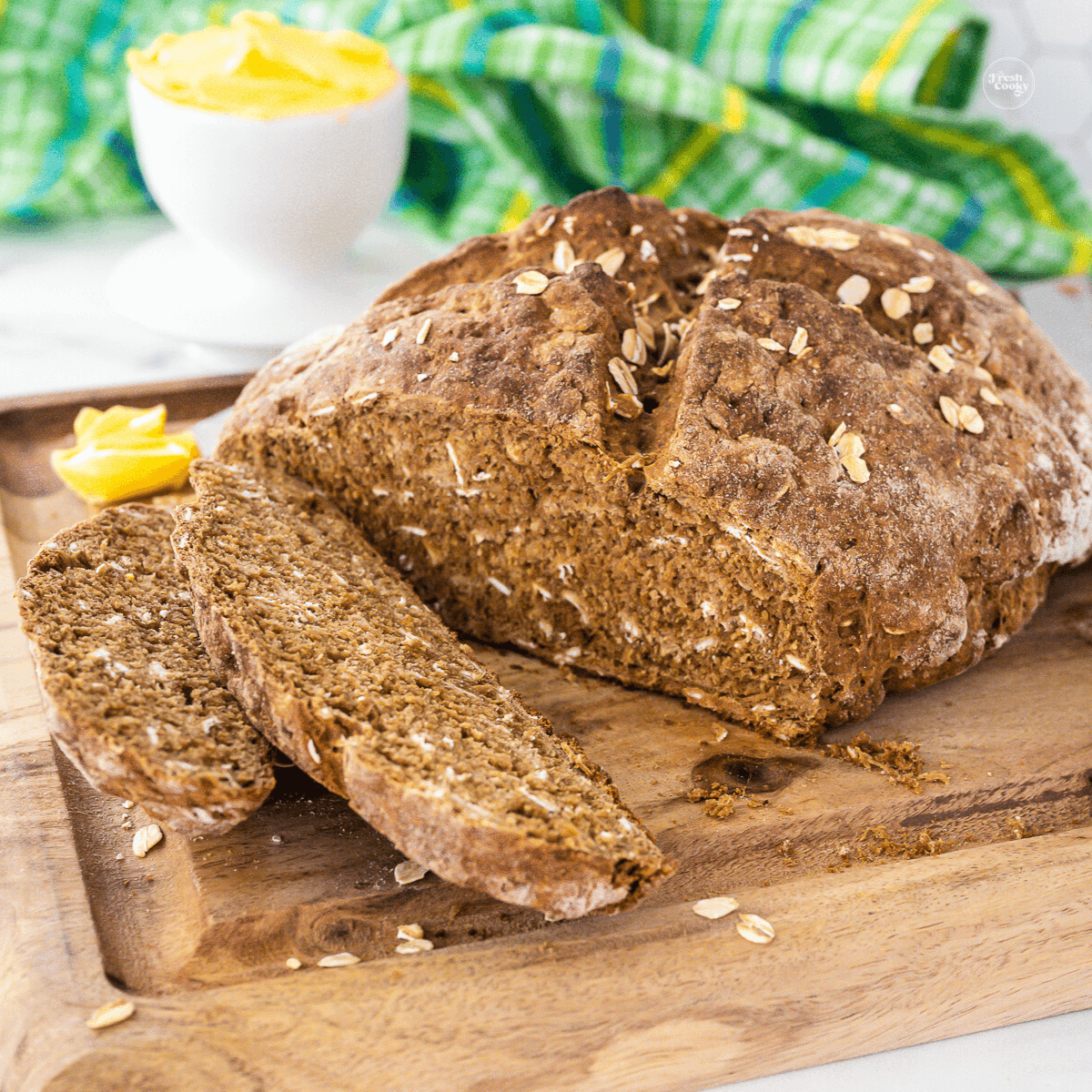
I enjoy giving precise details in my recipe posts to lead my readers through any questions. If you’re just here for the printable recipe, use the Jump to Recipe to head straight there!
Why You’ll Love this Irish Brown Bread
The origins of Irish Brown Bread are as humble as they are practical. Back in the 19th century, Irish households needed an easy, affordable way to bake fresh bread with simple ingredients—coarse wholemeal flour, soured milk, salt, and baking soda. No yeast, no rising, just real, honest bread that fueled hardworking families for generations.
After doing my research, I learned that traditional Irish brown bread is made with wholemeal flour, also called “brown flour” in Ireland. This coarsely ground whole-wheat flour, typically milled from hard red wheat, gives the bread its dense, nutty texture and hearty flavor. But finding true Irish wholemeal flour isn’t always easy to find, so I improvised! I used stone-ground whole wheat flour and added wheat germ to mimic that same rustic taste and texture. And trust me, it works beautifully.
I started with my classic 4-ingredient Irish Soda Bread recipe and gave it a whole-grain upgrade, inspired by recipes straight from Irish cookbooks. The result? A beautifully hearty, slightly tangy brown bread with a crisp crust and soft crumb. It’s perfect for slathering with butter, pairing with soups, or simply enjoying warm from the oven.
Serve this bread with classic Corned Beef and Cabbage, this Seafood Chowder, or this delicious Bangers and Mash!
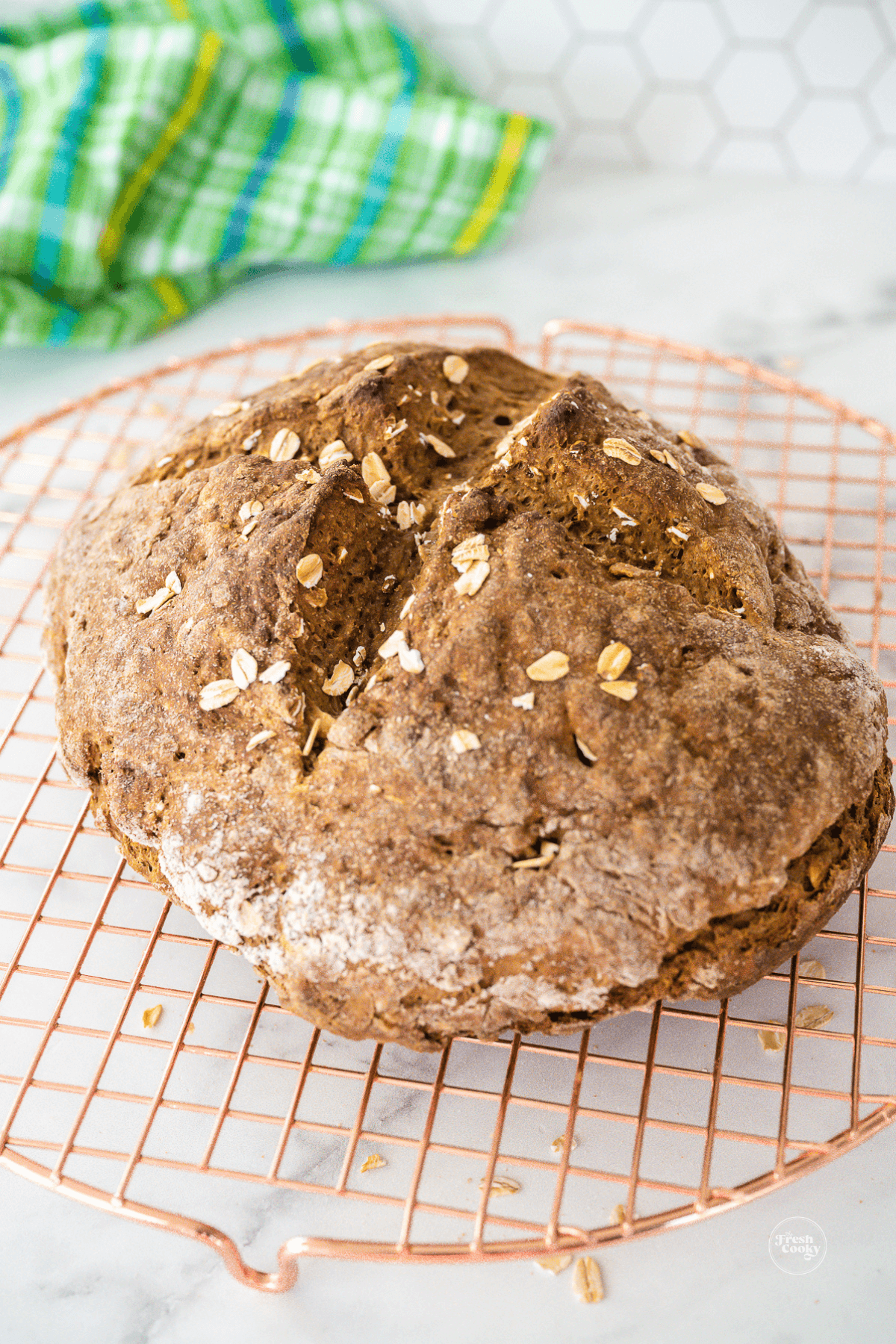
Irish Brown Bread Recipe Ingredients
- Flour: You’ll mix two flours for this recipe: stone-ground whole wheat flour and unbleached all-purpose flour. If preferred, use whole-wheat or wholemeal flour, but you may need to add more buttermilk, up to 2 cups.
- Rolled oats: Adds fiber and nutty flavor, so do not use quick-cooking oats; make it even more authentic by using Irish oats.
- Wheat germ: This optional ingredient adds nutty notes to the bread, brings more nutritional benefits, and makes it more like Irish wholemeal flour. Alternatively, you can use wheat bran instead of wheat germ.
- Molasses: Give this brown bread a touch of sweetness with rich molasses. Some recipes use dark brown sugar or even honey in place of molasses.
- Baking soda: Help the bread rise with baking soda as the leavening agent. Be sure to distinguish it from baking powder. Make sure your baking soda is fresh.
- Salt: Just a dash of kosher salt will enhance the sweeter notes of the bread.
- Buttermilk: Gives the bread a subtle acidity, making each bite slightly tangy, and reacts with the baking soda to give the bread its rise without yeast. See how to make your own buttermilk.
Get the full recipe in the recipe card below.
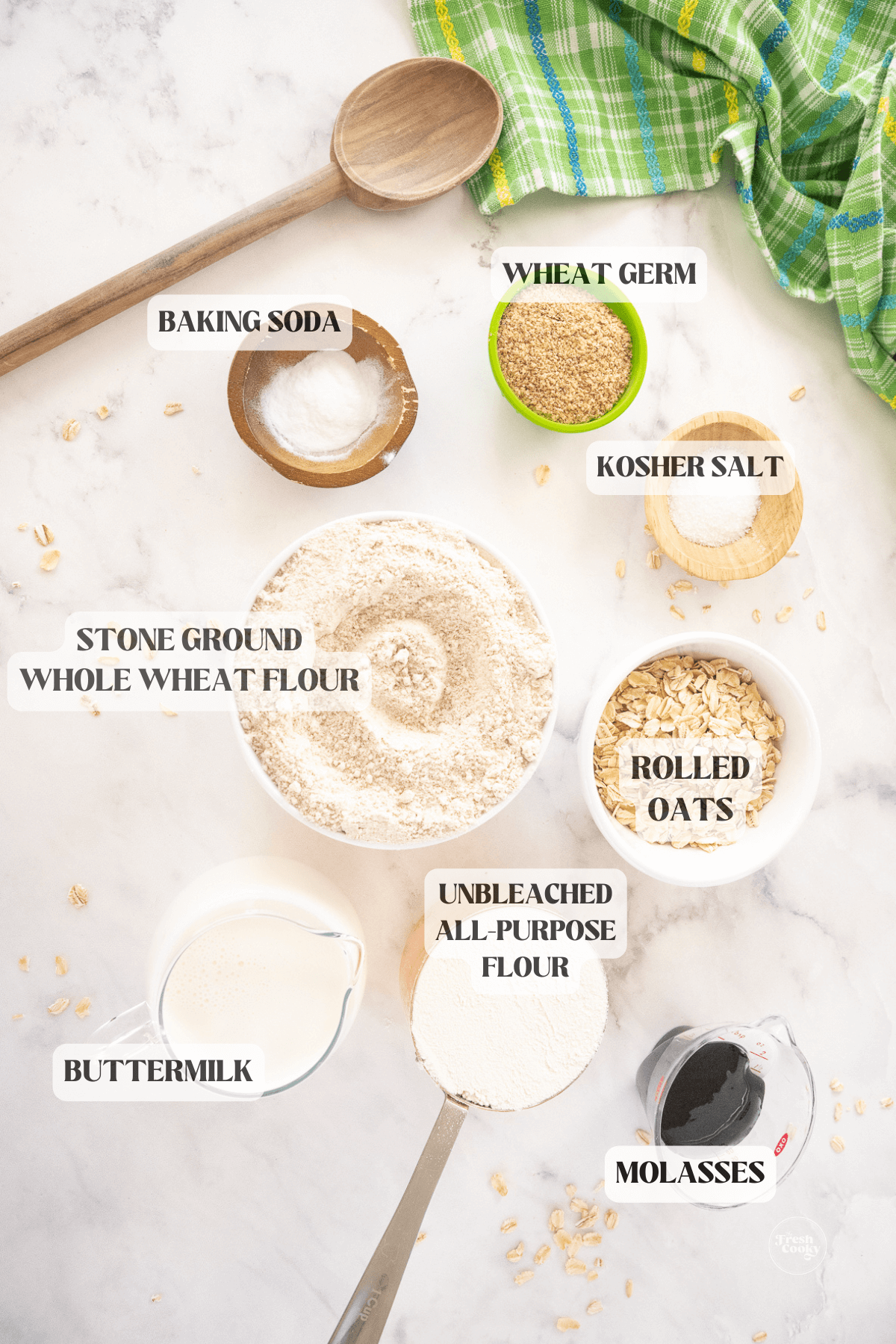
If you do not like the chewy flecks of rolled oats in bread, grind rolled oats into flour using a blender or replace them with oat flour.
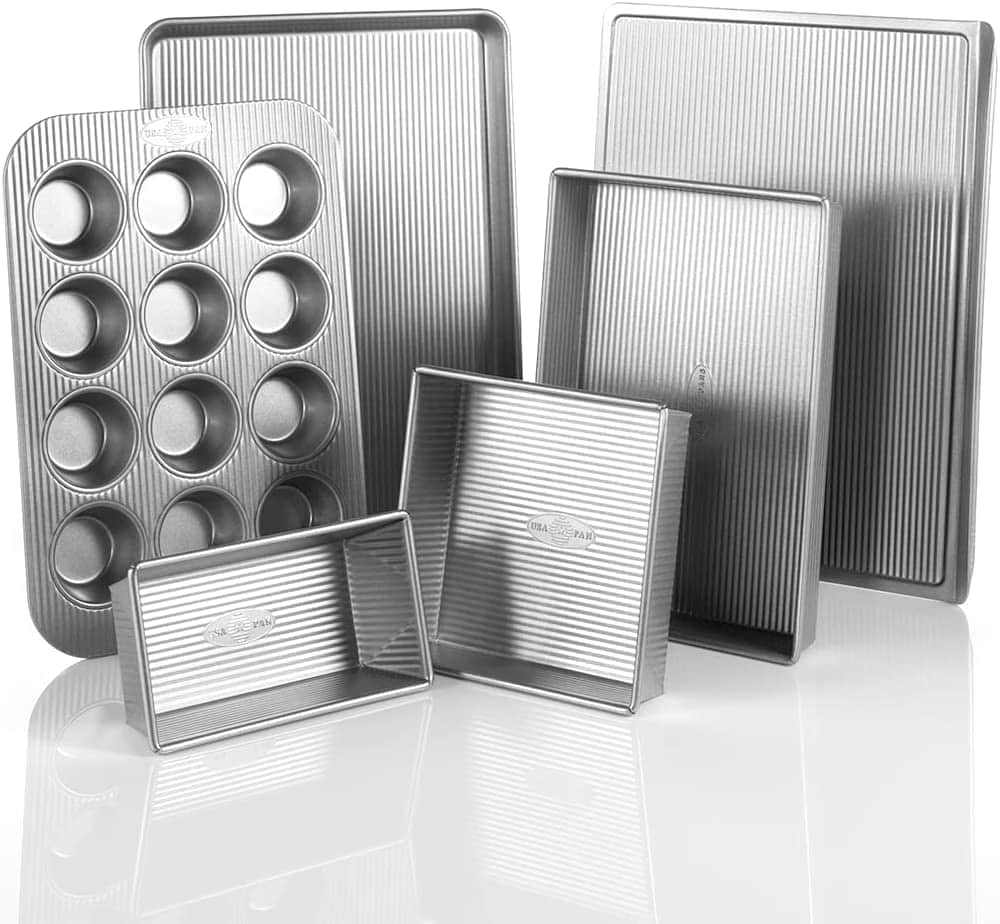
Recommended Tools
- Cast Iron Skillet
- Knife – This is my favorite, go-to knife
- Mixing Bowl << my favorite!
- Instant Read Thermometer
Make your own Buttermilk or Soured Milk
- To a 2-cup liquid measuring cup, add 1 ½-2 tablespoons vinegar or lemon juice, then fill up the measuring cup to the 1 ¾ mark or 2-cup mark with your favorite milk; plant-based milk may also be used. Stir and allow to sit for 5-10 minutes to sour.
How to make Brown Bread (Irish)
Step 1 | Mix the Dry Ingredients.
Before we dive right into the recipe, preheat the oven to 450°F (232° C) and set out a 10-inch cast iron skillet. You can also line a baking sheet with parchment paper instead of using the cast iron skillet.
Then, set out a medium to large bowl, and add your dry ingredients, including the stone-ground wheat flour, all-purpose flour, rolled oats (or oat flour), wheat germ, baking soda, and salt. Mix them until they are fully incorporated.
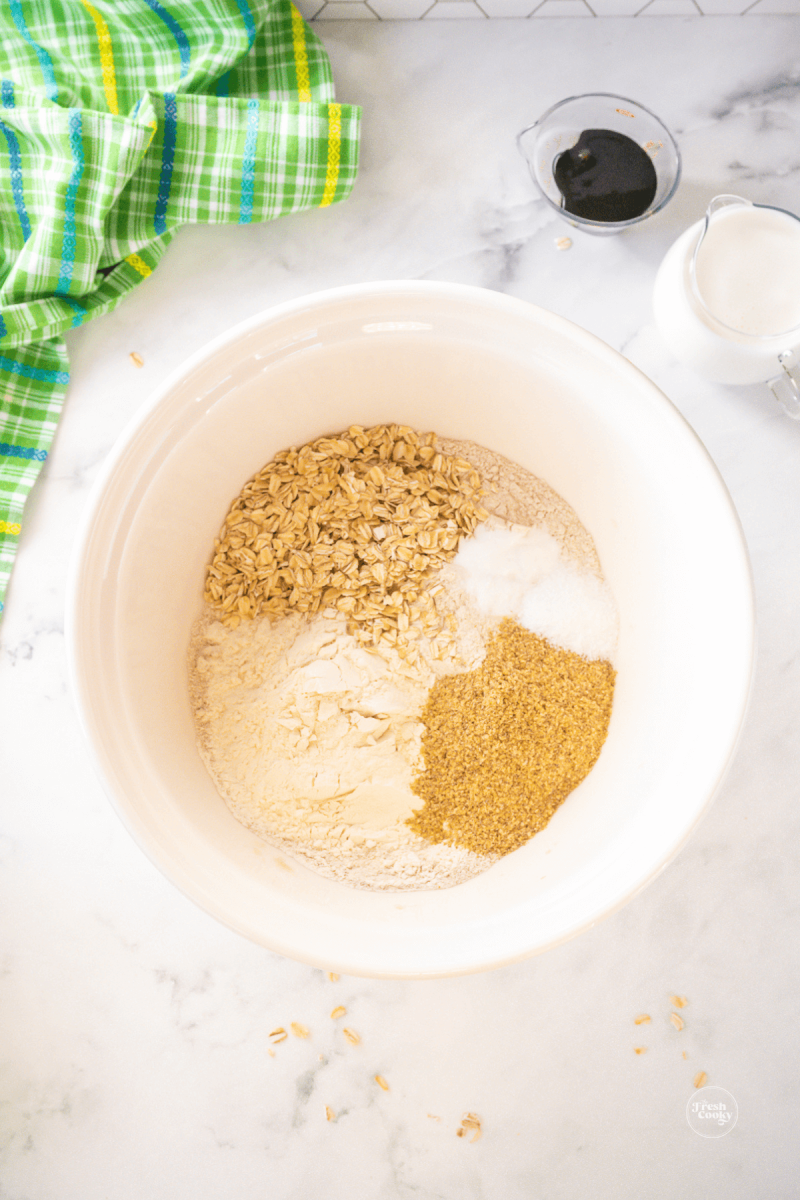
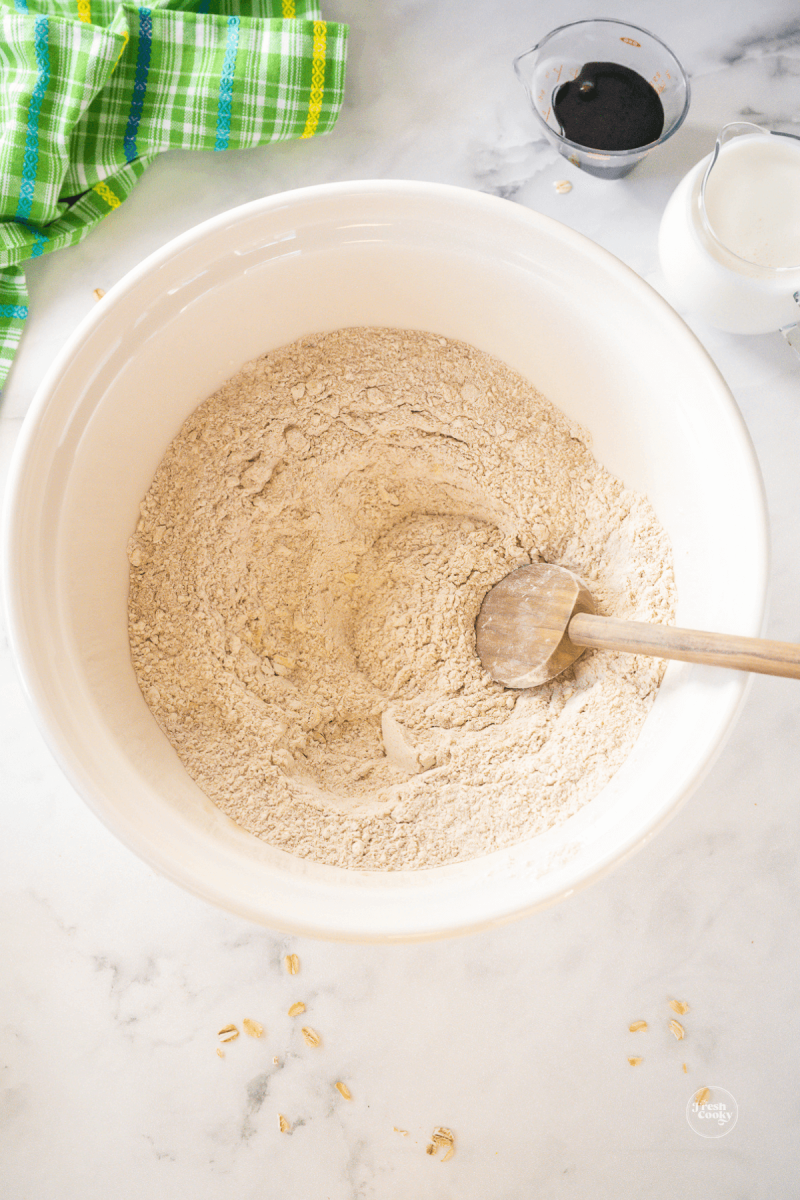
Step 2 | Add the Wet Ingredients to form the Dough
Next, use your hands or a wooden spoon to make a well in the middle of the ingredients. Add buttermilk and molasses to the bowl and stir it in to make a sticky dough. If the dough is dry and crumbly, add some more buttermilk, one tablespoon at a time. Continue adding the buttermilk until the dough comes together nicely; flour is incorporated but not too sticky.
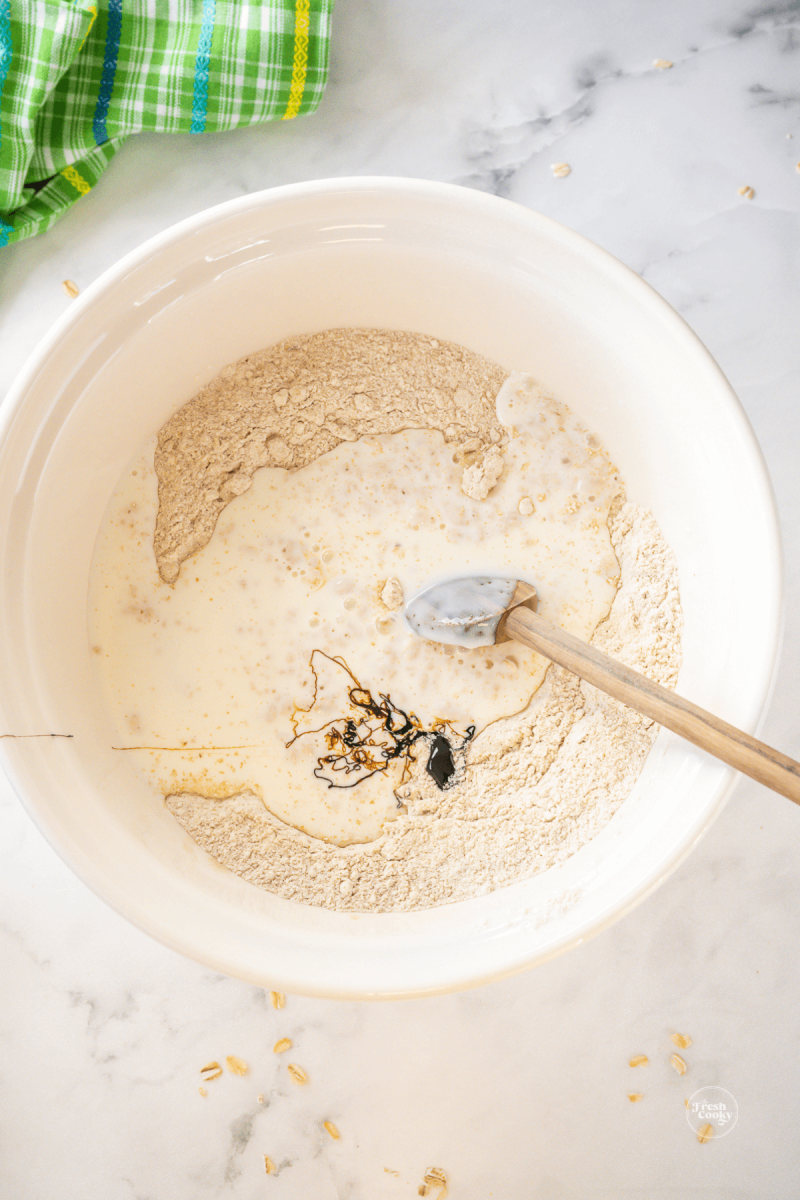
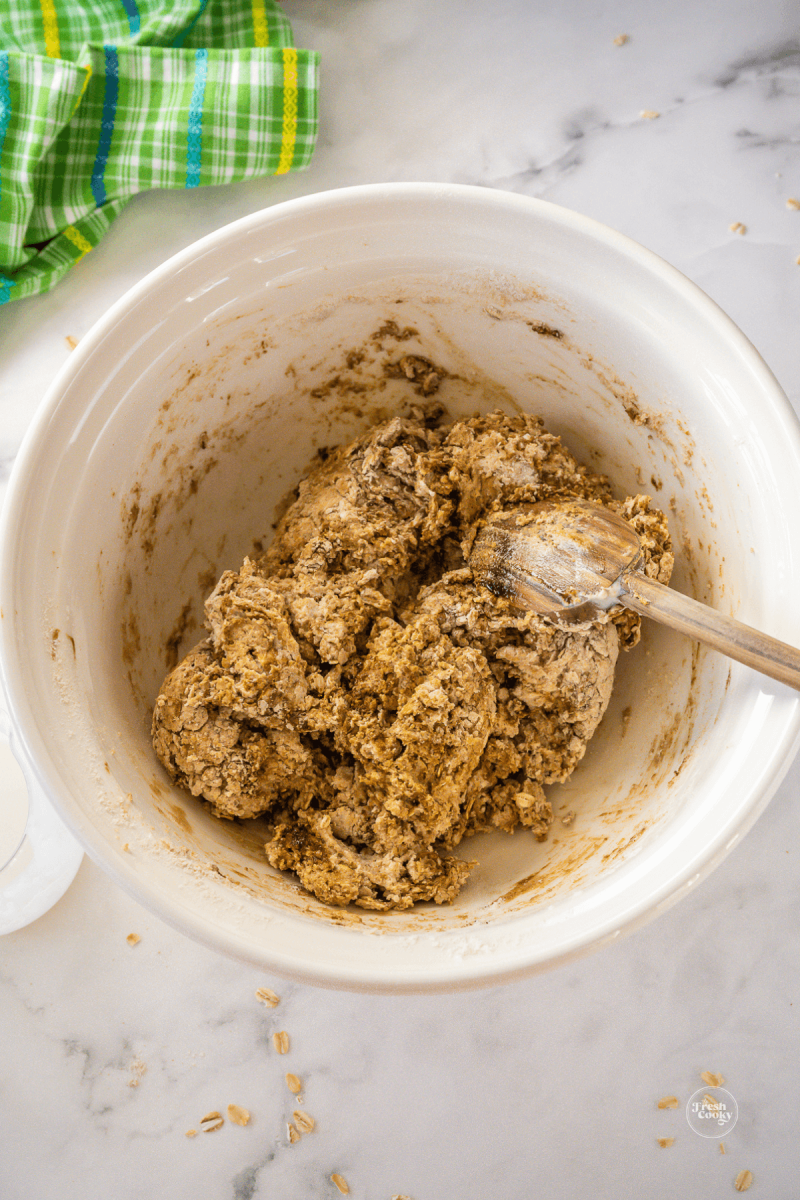
Step 3 | Knead the Dough and form a Disc
Then, clear a workspace and lightly dust it with flour. Place the dough onto the floured surface and gently knead it with your hands to further bring it together. You only need to do this a few times—Be sure not to overmix the bread dough, or it may come out a little denser than desired.
Pat the dough into a large round disc about 8-10 inches in diameter and 1 ½ – 2 inches thick. If your dough is looking a little rustic and bumpy, no worries! This is fine!
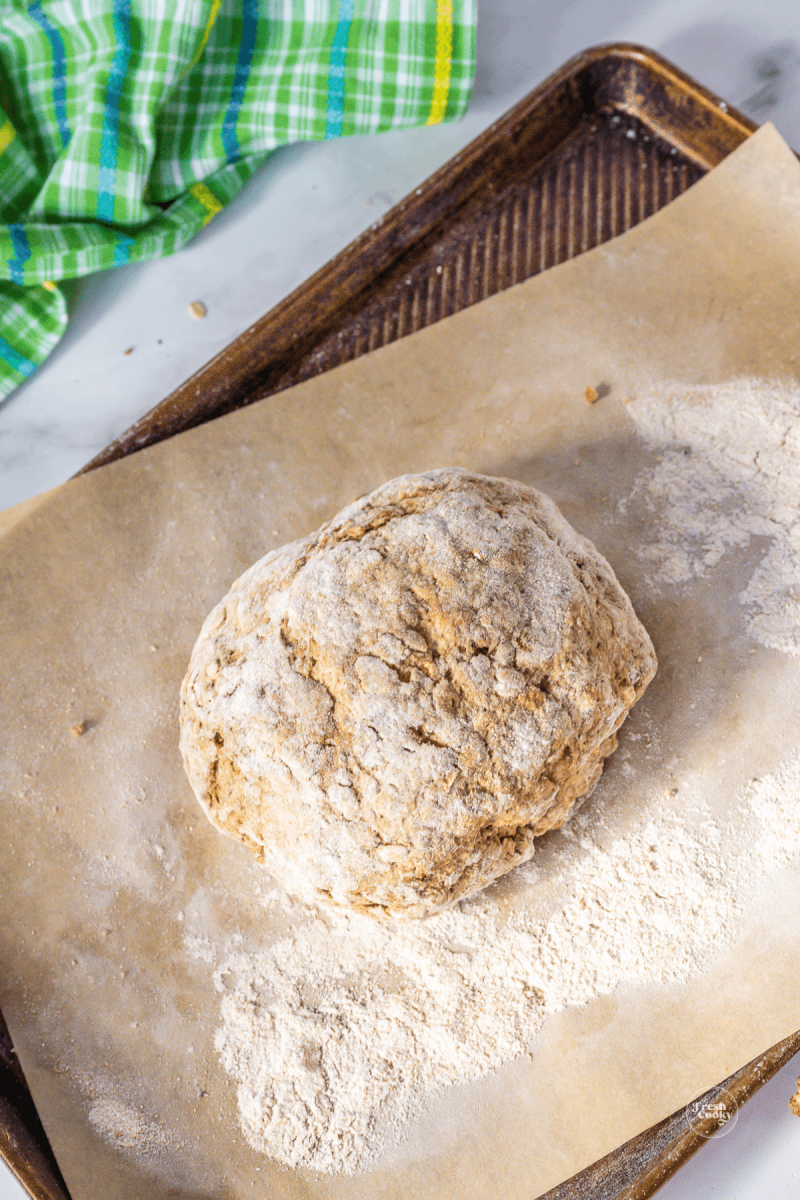
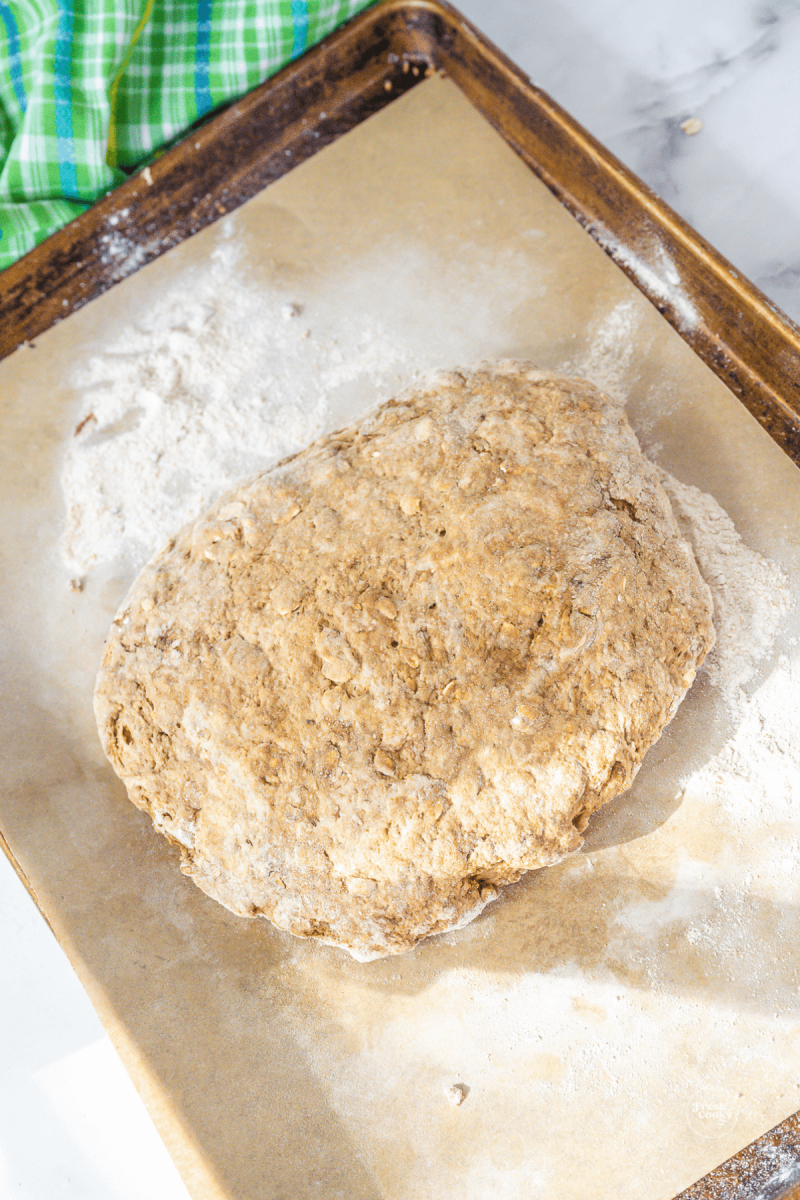
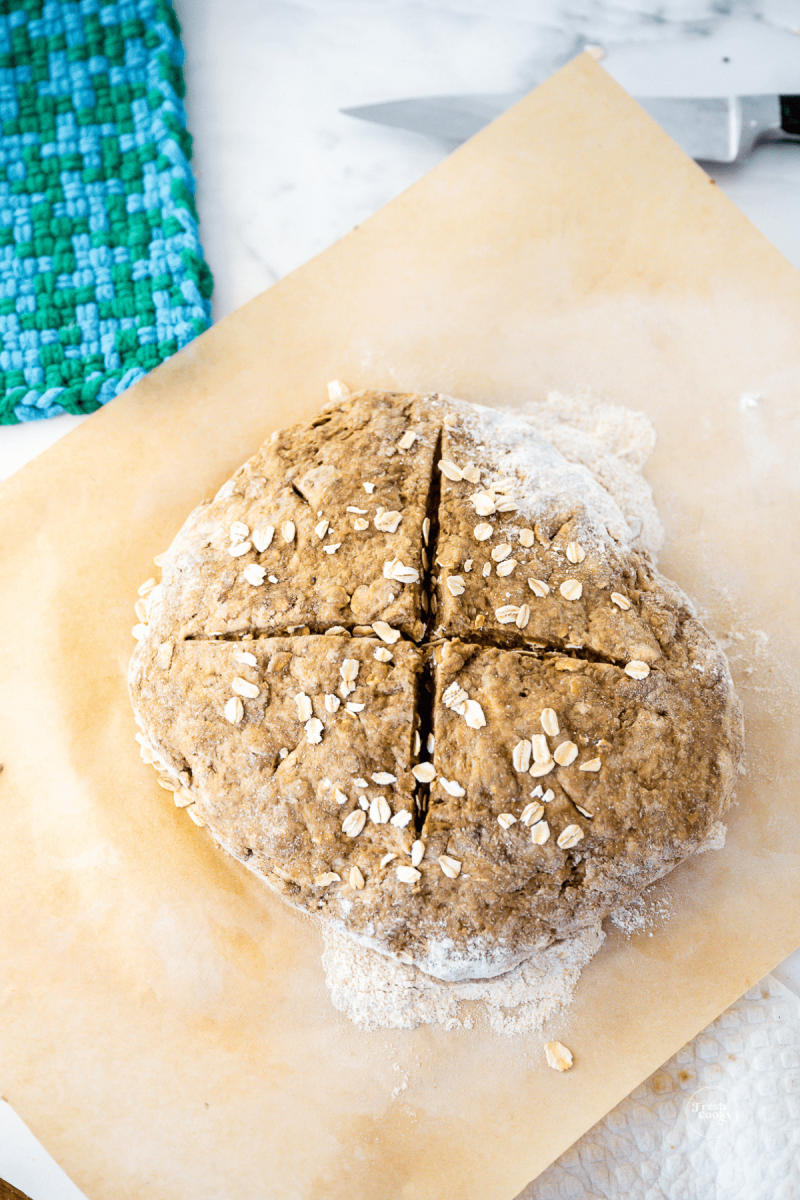
Next, use a sharp knife to cut a cross on the top of the loaf and puncture each of the quarters with the tip of the blade. Legend has it; this lets the fairies out. As a final touch, sprinkle with some rolled oats or caraway seeds. But this is, of course, optional.
Step 4 | Bake the Bread
If you’re using the cast iron skillet for baking your bread, drop some butter and slip it into the oven to melt. Then, remove it and place the dough into the buttered cast iron skillet. If preferred, transfer the soft dough to a lined baking sheet instead.
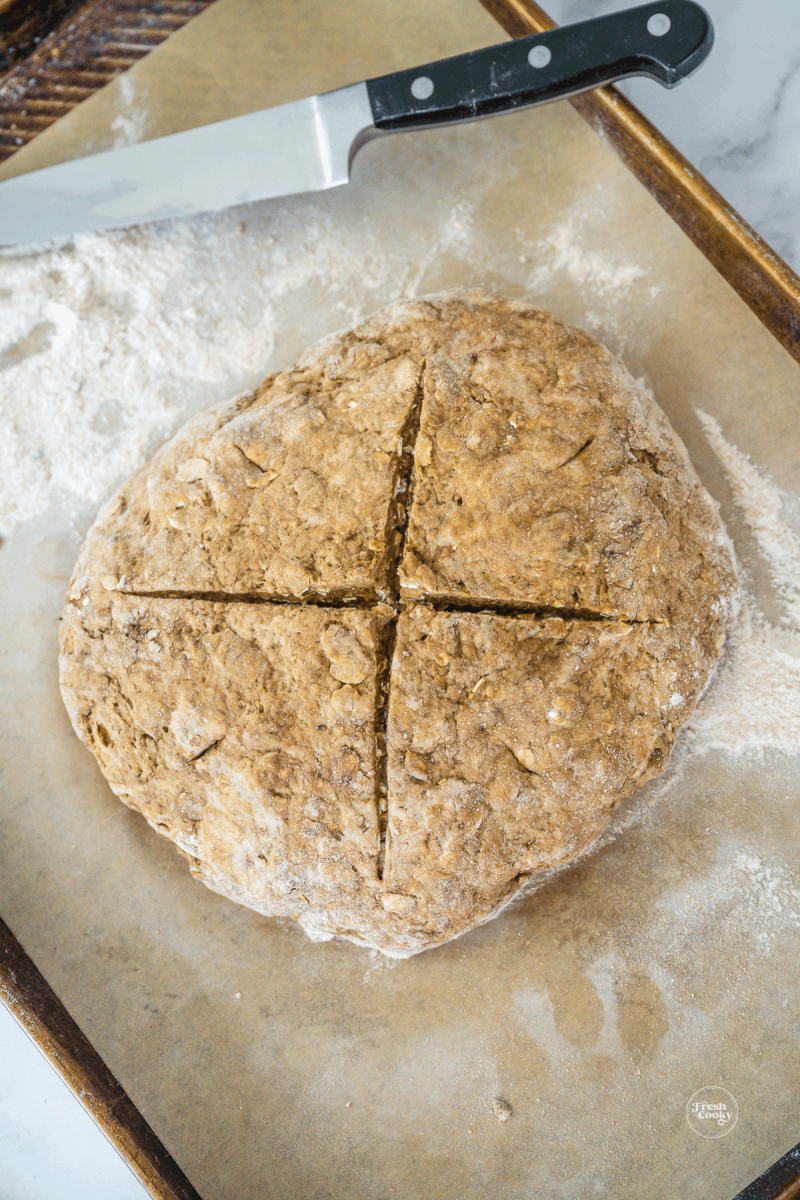
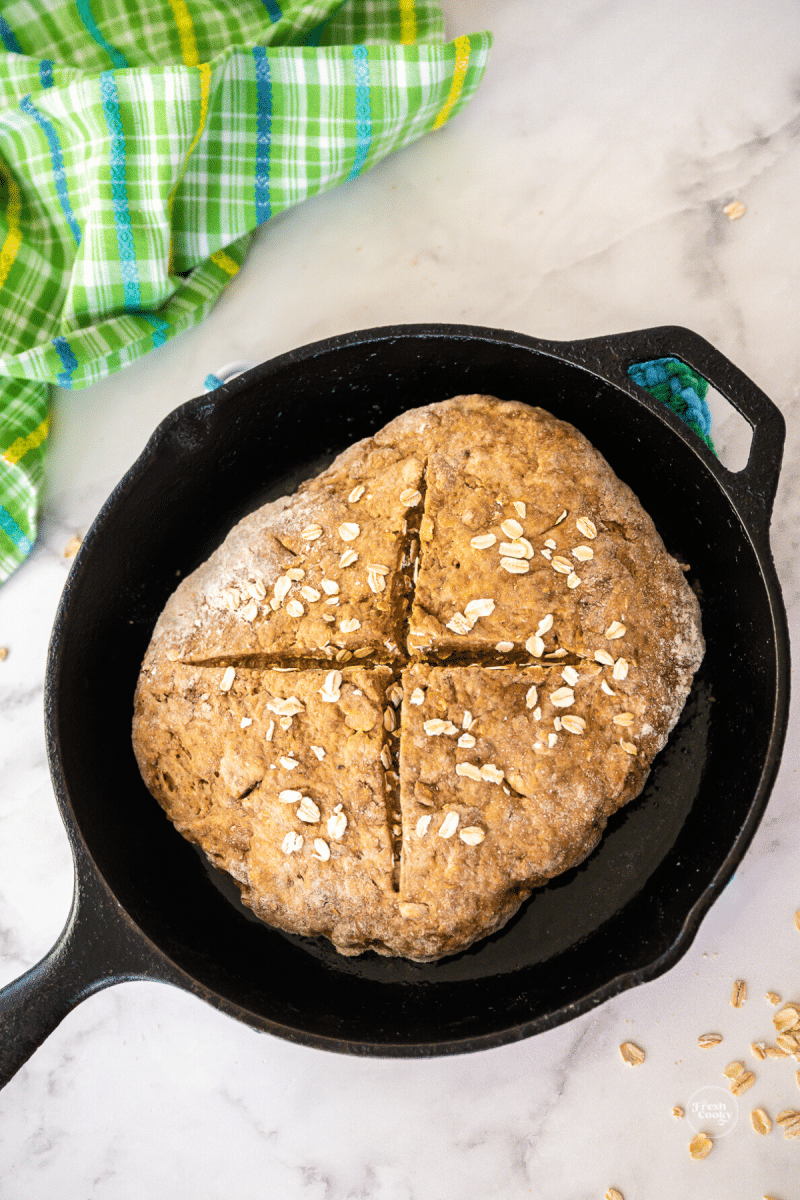
Bake the dough for about 15 minutes at 450° F (232° C), then reduce the heat to 400° F (204° C) and bake the bread for another 20-25 minutes. You’ll know the Irish brown bread is finished baking when you tap the bottom and hear a hollow sound. You may also check the doneness of the bread with an instant-read thermometer. Insert it into the center of the loaf. When it reaches 200° F (93° C), your bread is good to go!
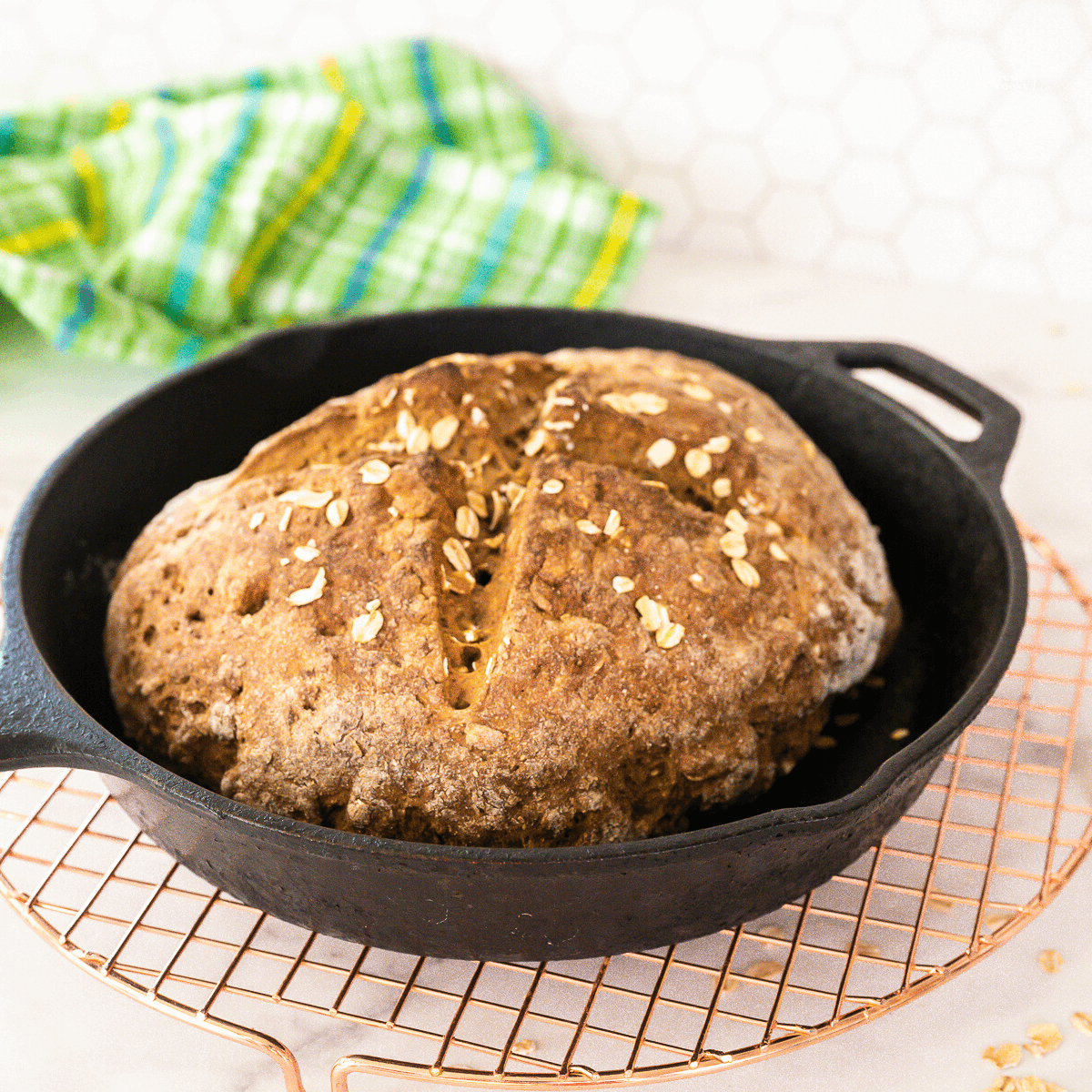
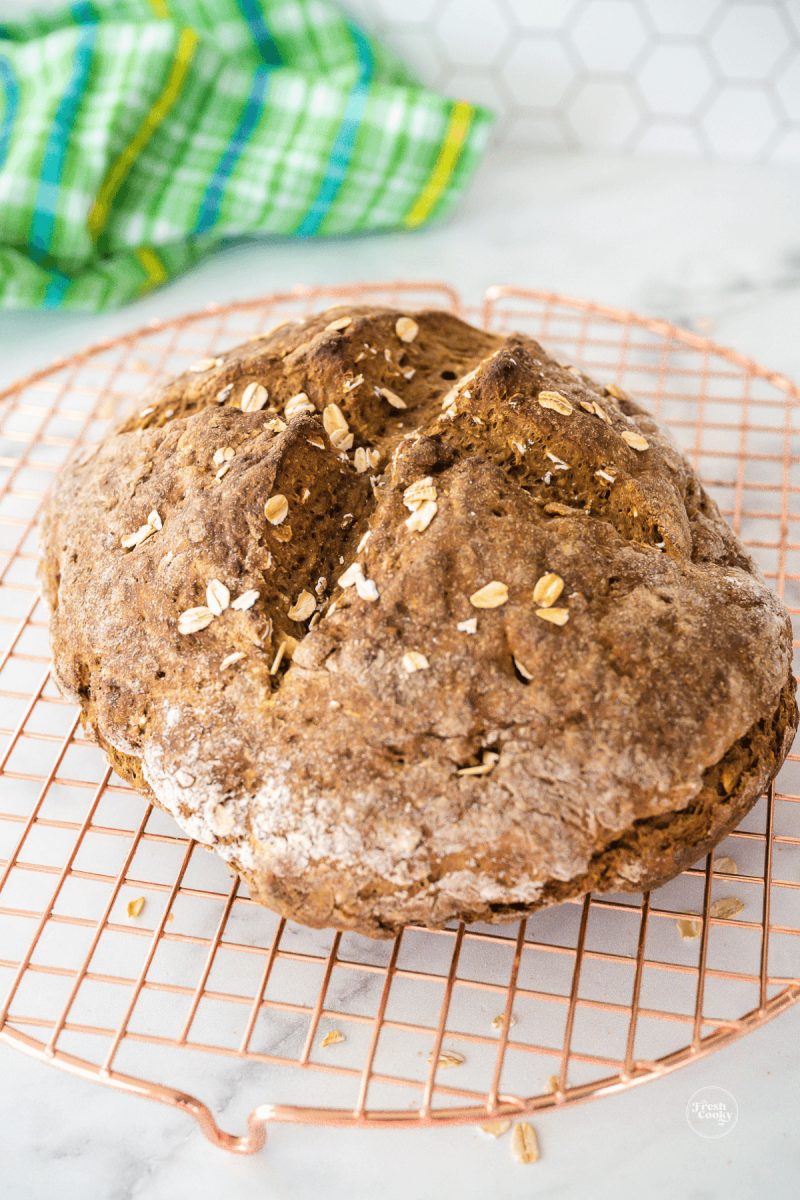
Step 5 | Cool and Slice!
Now, place the bread on a wire rack, and let it rest, cooling for about 30 minutes before slicing; it’s essential to let it cool for a bit. For the best texture and flavor, serve your Irish brown bread slices while they’re still toasty and warm! To top it all off, smear a pat of delicious Irish butter and jam on each piece of fresh bread—YUM!
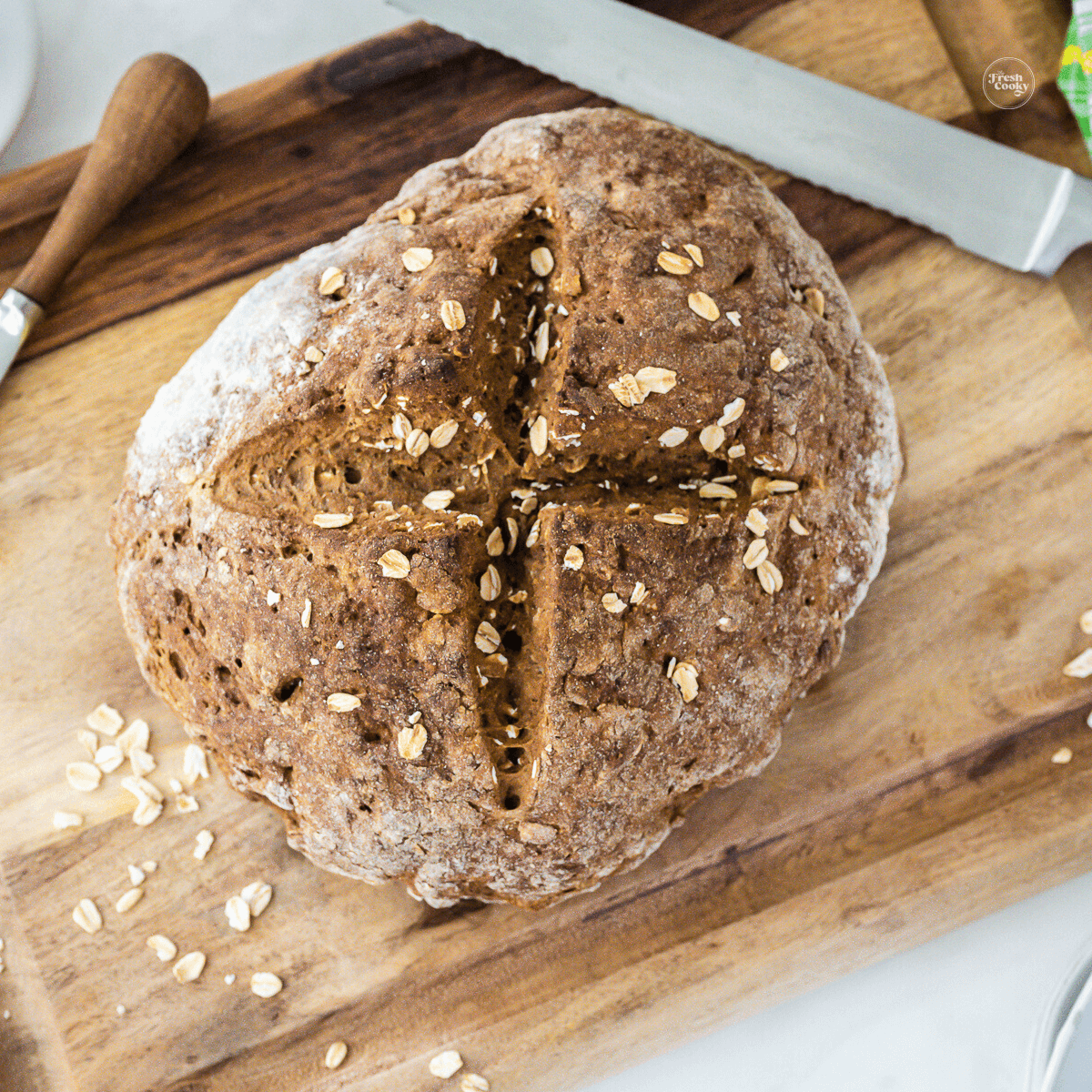
Brown Bread Recipe tips
- If you don’t have an instant-read thermometer, check the doneness of your authentic Irish brown bread recipe with a toothpick or wooden skewer. Please insert it into the center of the loaf. If the toothpick is clear of crumbs, the bread should be ready!
- Irish brown bread isn’t traditionally made in a loaf pan. Bake the dough in a cast iron skillet or lined cookie sheet for this recipe. But if you prefer to bake in a loaf pan, feel free, though you might need to bake it a bit longer, covering it with a little aluminum foil if browning too quickly.
- Healthy bread? That’s right! Bread made with whole wheat can be very beneficial for your health, including this heart-healthy, fiber-rich and vitamin-packed Irish brown bread.
Irish Brown Bread Variations
- Guinness Twist: Some Irish brown bread recipes include a dash of malty and sweet Guinness Stout to give it a unique flavor. If you choose to use some Guinness, reduce the amount of buttermilk by the amount of Guinness or make my Guinness
- Add-Ins: For more texture and flavor, include about half a cup of raisins, currants, or a tablespoon of caraway seeds.
- Wholemeal or Whole-Wheat – You can make an authentic Irish brown bread recipe using all whole-wheat or wholemeal flour if desired. Whole grains absorb and need more moisture, so you may need to add additional buttermilk to the dough. In recipe testing, I enjoyed the crumb using the method outlined below.
- GF Irish Brown Bread: This recipe is not gluten-free as is. However, you can swap the whole wheat and all-purpose flour with a combination of gluten-free alternatives, like brown rice flour, sorghum flour, a good gluten-free all-purpose flour, and millet flour.
- Dairy-Free Brown Bread: The only dairy ingredient in this recipe is buttermilk. Luckily, most stores will have a dairy-free buttermilk alternative or make your own using your favorite plant-based milk and vinegar as described above.
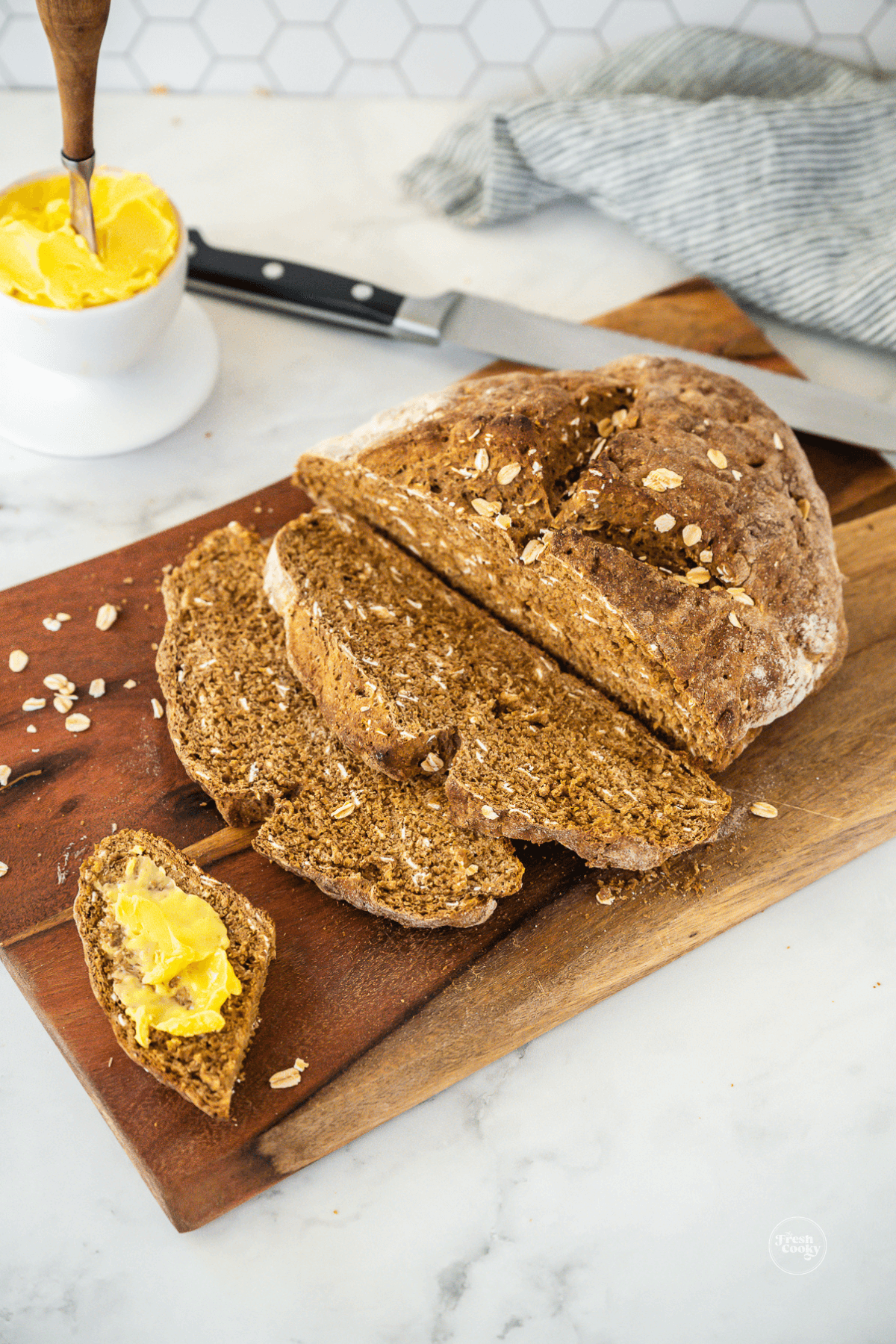
Softer Crust Authentic Irish Brown Bread Recipe
I love the crunchy crust on brown bread; if a softer crust is desired, during the last 5 minutes of baking, brush the top of the brown soda bread with 1-2 tablespoons of melted butter, and if you have any left, brush on after removing from the oven as well.
How to store Irish Brown Bread
Room Temperature – Irish brown bread tends to dry out quickly. Store it in an airtight container or tightly wrapped with plastic on the counter for 2-3 days. Try using a bread saver or this bread box to retain moisture.
Fridge – The fridge tends to dry out bread, I recommend freezing instead of refrigerating it.
Freezer – To preserve the bread for much longer, store cooled brown soda bread by wrapping twice in plastic wrap, then place it in a freezer baggie for up to 3 months.
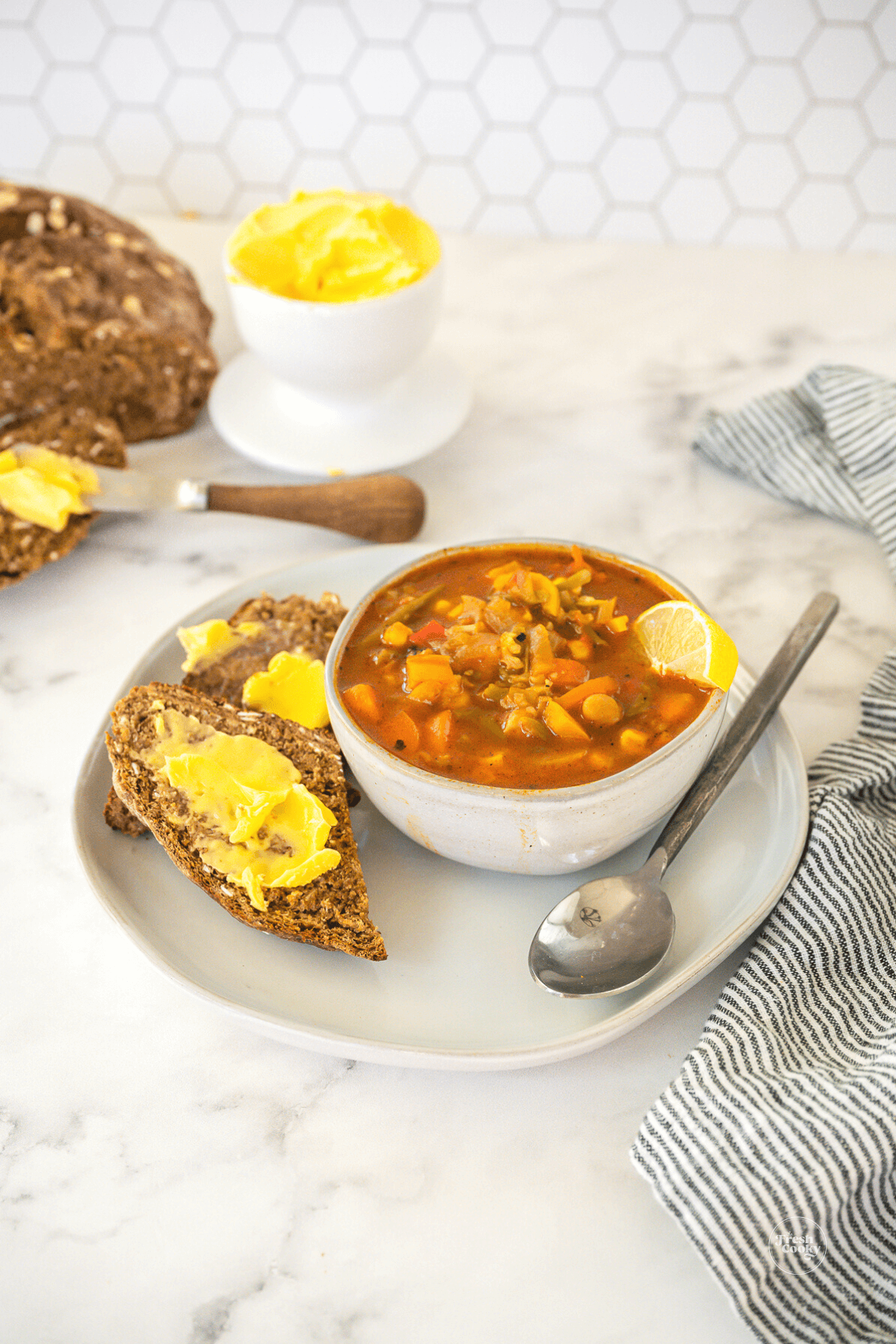
Frequently Asked Questions
Authentic Irish soda bread and brown bread are served for superstitious reasons. The Irish believe that the cross made on the surface of the bread’s crust will release fairies and deter evil spirits, protecting their family and loved ones.
Traditionally, the bread was made every couple of days and eaten often with dinner. Today, it is mainly served on St. Patrick’s Day and other holidays, though in our house it’s made anytime we are having a hearty stew, soup or when I need a fast bread recipe.
Of course, this Irish bread is best served with other classic Irish meals, like corned beef and cabbage or traditional soups and stews. It’s also tasty as a simple breakfast, toasting the bread and topping it with quality butter, jelly, or jam.
Really, it can be served any way you would typically use bread, rolls, or biscuits.
Irish brown bread and soda bread are traditional Irish recipes made with very similar methods. However, the brown flour version has more of a nutty and rich flavor with a tender texture, while the white flour soda bread is a little sweeter and a bit more hearty biscuit-like – we love them both ways!
As the bread cools, a sciency thing happens, the water molecules move outward towards the crust, which helps to soften the crust and prevents the interior of the bread from being gummy. If you slice in too early, your bread will be difficult to slice and you will have a gooey gummy mess that sticks to your knife. So wait just a little bit, 30 minutes is about right. Your bread will still be plenty warm to melt that butter
Our Favorite Irish Recipes
Round out your St. Paddy’s day with Baked Corned Beef and Cabbage, or Bangers and Mash with Milk Stout Gravy, Skillet Shepherd’s pie, this Steak and Ale pie, and finish it with this easy Guinness Chocolate Cake, and don’t forget a traditional Irish Coffee.
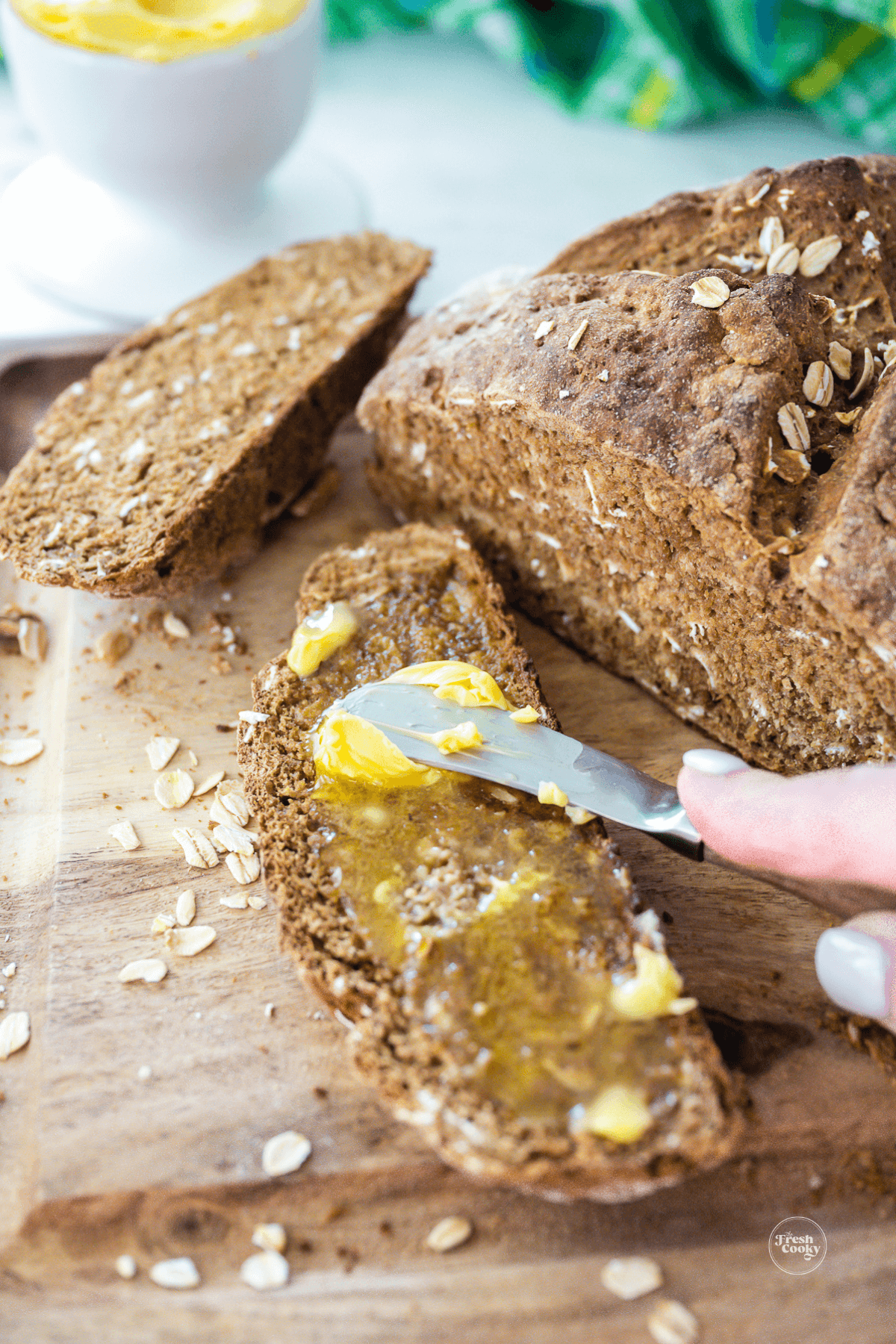
More Delicious Bread Recipes
- Red Lobster Cheddar Biscuits
- Sweet Molasses Brown Bread Rolls
- Easy 4 Ingredient Beer Bread
- Russian Black Bread
Be sure to let the loaf cool off before slicing and serving. Otherwise, you may have a crumbly, gummy mess!
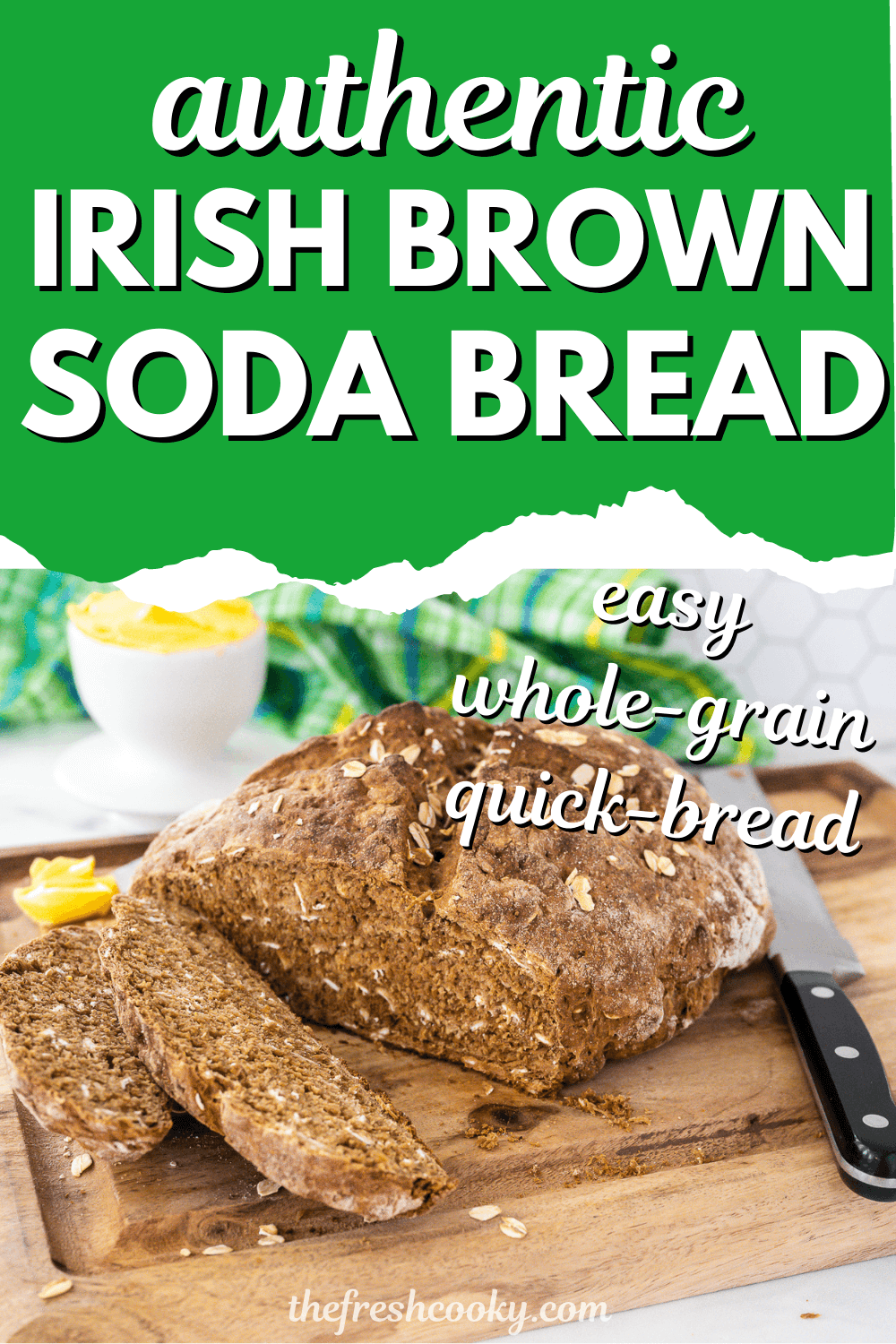
More Popular Recipes from The Fresh Cooky
I hope you loved this authentic Irish Brown Bread Recipe — if you did, would you share your creation on Instagram, Facebook and Pinterest? And be sure to comment below!
Like this recipe?
Don’t forget to give it a ⭐️⭐️⭐️⭐️⭐️ star rating and leave a comment below the recipe!
Ingredients
- 2 ½ cups stone-ground whole wheat flour I used Bob's Red Mill. Irish Wholemeal flour may be used in place
- 1 cup unbleached all-purpose flour
- ½ cup rolled oats not quick-cooking or instant, grind in blender if you prefer a smooth bread finish
- 3 tablespoons wheat germ or wheat bran, this is optional but makes it more authentic. If using Irish wholemeal flour, omit and increase the flour by 3 tablespoons.
- 3 tablespoons molasses may omit, if desired
- 1 teaspoon baking soda
- 1 ½ teaspoons kosher salt
- 1 ¾-2 cups buttermilk I used whole milk, best to use real buttermilk, but see notes to make your own
Instructions
- Preheat the oven to 450°F (232° C) and prepare a 10-inch cast iron skillet or line a baking sheet with a piece of parchment paper.
- In a medium to large bowl, stir together the stone-ground wheat flour, all-purpose flour, rolled oats, wheat germ, baking soda, and salt.
- Make a well in the middle of the dry ingredients, then add buttermilk, and molasses to the bowl and stir it in to make a sticky dough—if the dough is very dry and crumbly, add a little additional buttermilk about a tablespoon at a time until the dough just comes together.
- With the bread dough on a lightly floured surface, gently knead the dough a few times to bring it together. Don’t overmix.
- Pat the dough into a large round disc (about 8-9 inches), flattening to about 1 ½ – 2 inches in thickness. It’s okay if it’s rustic looking and not smooth. Using a sharp knife, cut a cross in the top of the dough, then puncture each of the quarters with the tip of the knife. Legend has it this lets the fairies out. If desired, sprinkle with some rolled oats or caraway seeds.
- Place the dough into a buttered cast iron skillet (place a couple of teaspoons of butter in the skillet and place in the preheated oven for a few minutes, until melted). Transfer the brown bread to the skillet or onto a parchment-lined baking sheet.
- Bake the dough for about 15 minutes at 450° F (232° C), then REDUCE the temperature to 400° F (204° C) and bake the bread for another 20-25 minutes. You'll know the Irish brown bread is finished baking when you tap the bottom and hear a hollow sound. For best results use an instant-read thermometer. Insert it into the center of the loaf, when it reaches 200° F (93° C), your bread is good to go.
- Place the bread on a wire rack, and let it rest, cooling for about 30 minutes before slicing, it's important to let it cool for the best texture and flavor. Slice and serve with a pat of delicious Irish butter and/or fresh jam.
Notes
- Guinness – If you choose to use some Guinness reduce the amount of buttermilk by the amount of Guinness or instead, make my 4 ingredient beer bread, using Guinness instead.
- Add-Ins: For more texture and flavor, include about half a cup of raisins, currants, or a tablespoon of caraway seeds.
- Use all whole-wheat or wholemeal flour if desired. Whole grains absorb and need more moisture, so you may need to add additional buttermilk to the dough.
- GF Irish Brown Bread: I have not tried, but have had success in the past; swap the whole wheat and all-purpose flour with a combination of gluten-free alternatives, like brown rice flour, sorghum flour, a good gluten-free all-purpose flour, and millet flour.
- Dairy-Free Brown Bread: Replace with a dairy-free buttermilk alternative or make your own.
- How to make buttermilk: Place 2 tablespoons vinegar or lemon into 2 cup measuring cup, add your milk (cow or plant-based) to 2 cup mark, stir, and let sit 5-10 minutes until soured. Use as needed.
- Counter – Store it in an airtight container or tightly wrapped with plastic wrap on the counter for 2-3 days. Try using a bread saver or this bread box to retain moisture.
- Fridge – Stored in an airtight baggie bread should last 5-7 days in the fridge.
- Freezer – Store cooled brown soda bread by wrapping twice in plastic wrap, then place it in a sealed freezer bag or something similar and keep it in the freezer for up to 3 months.
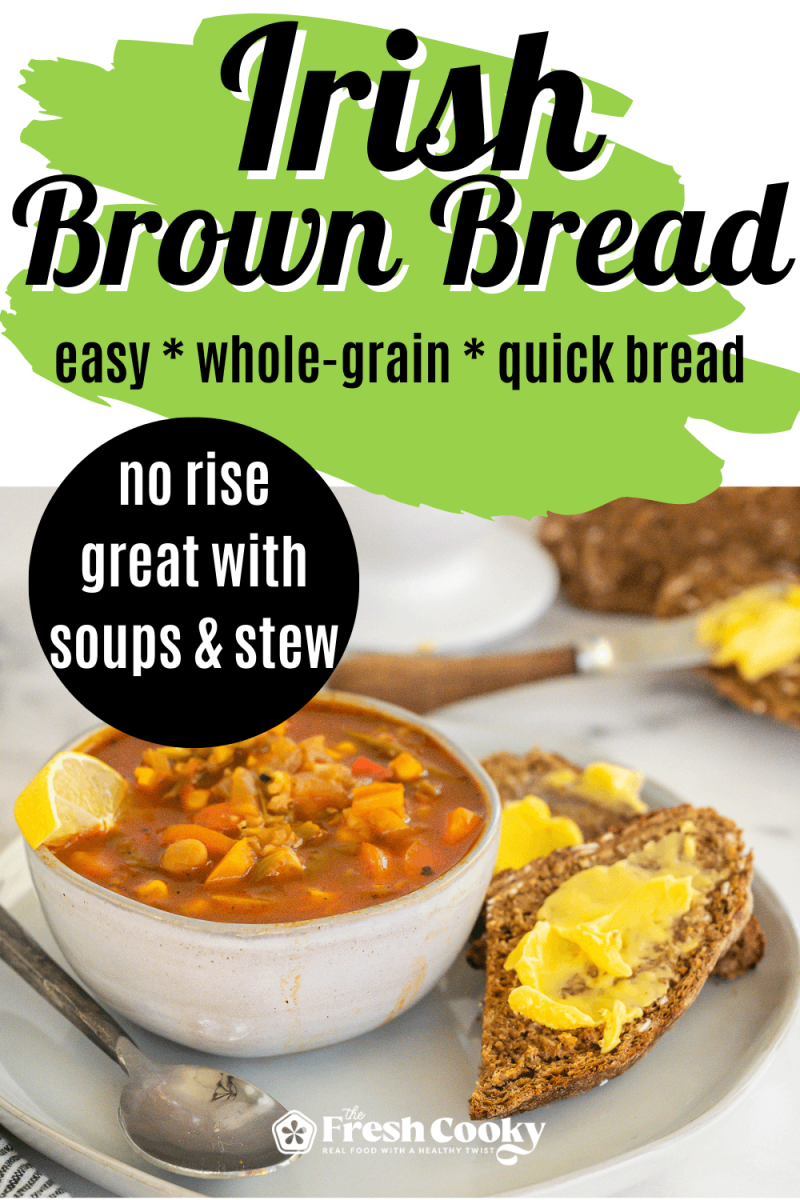
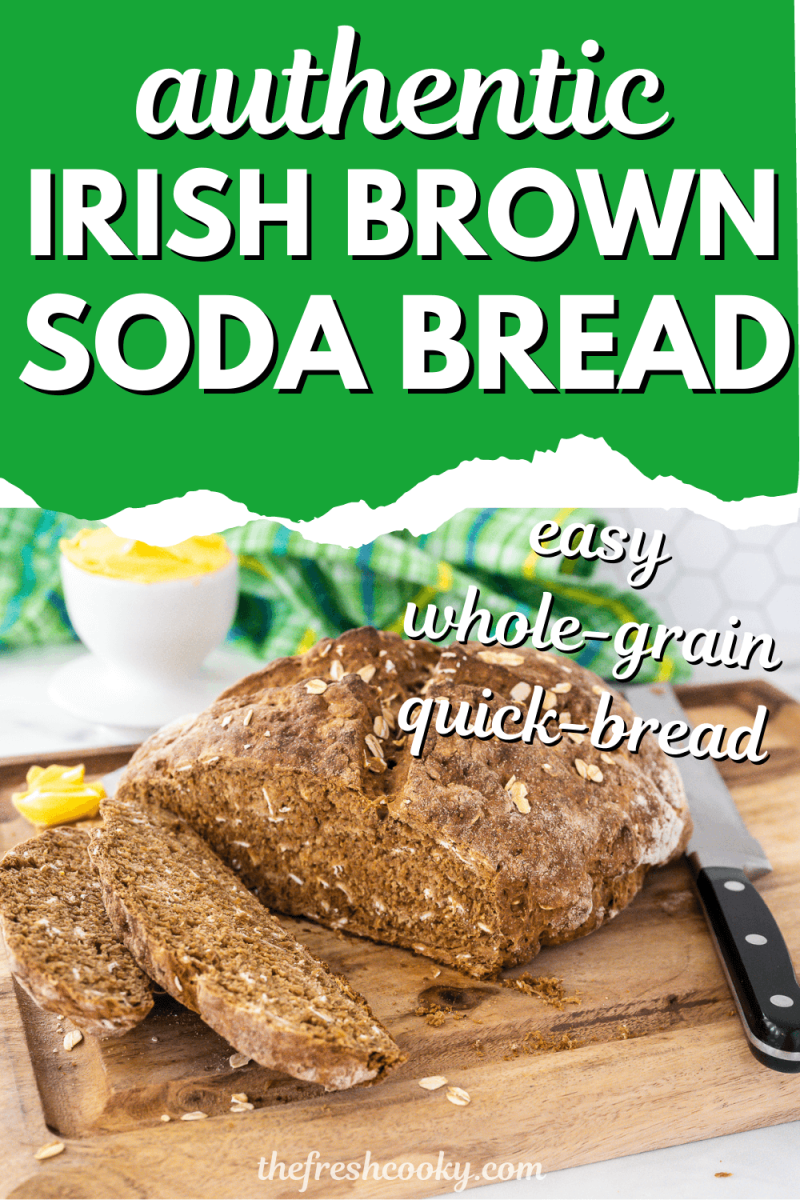
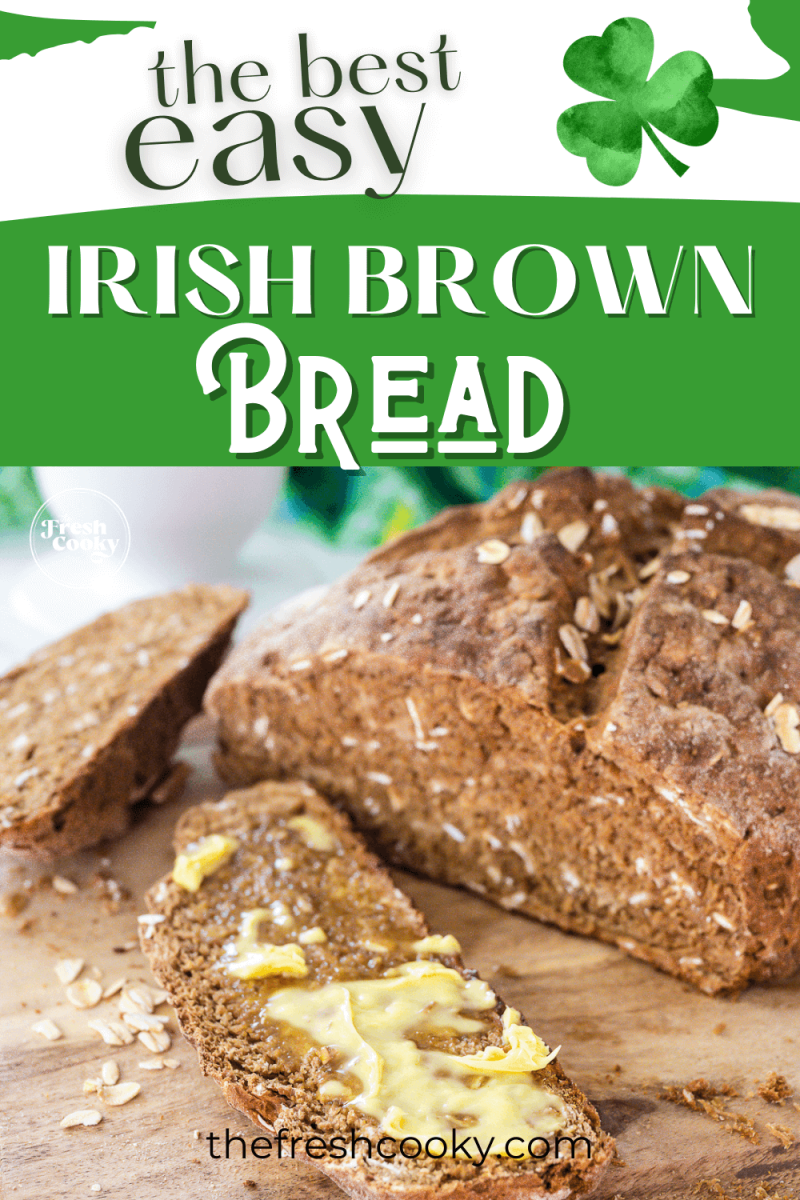
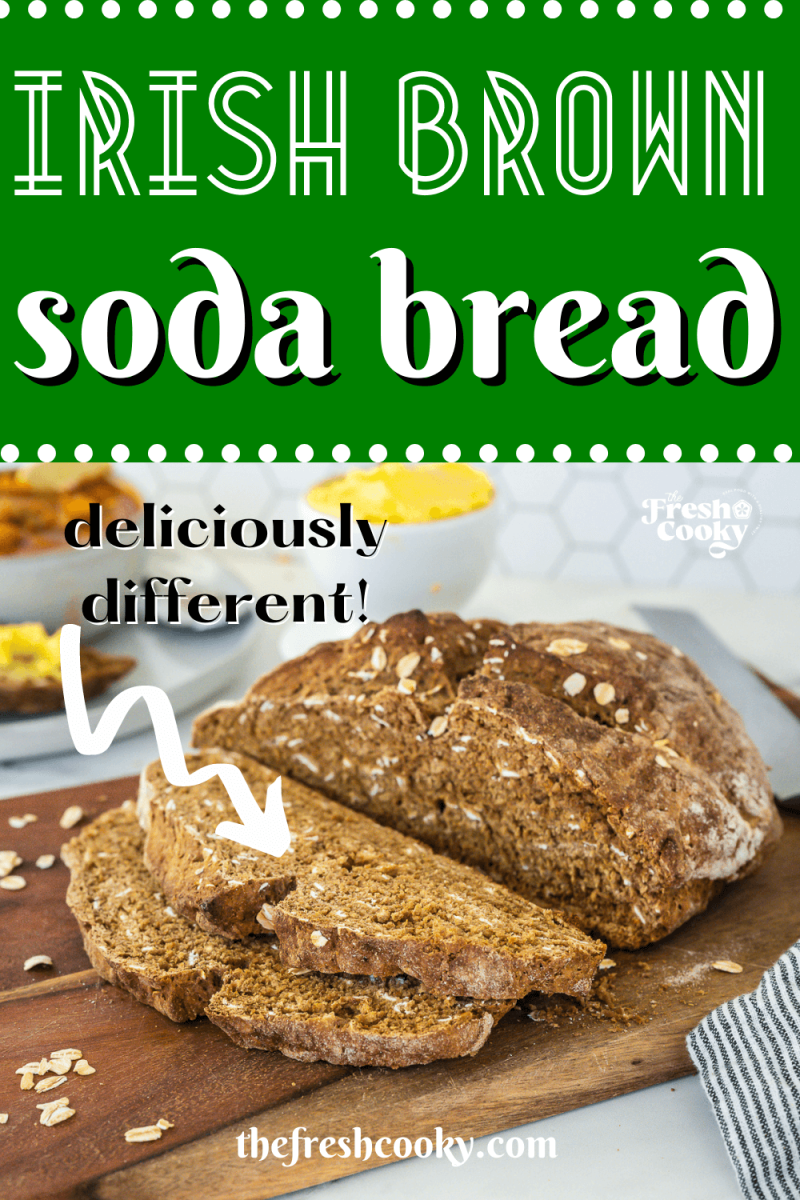
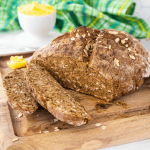

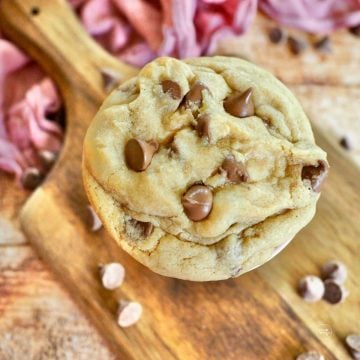
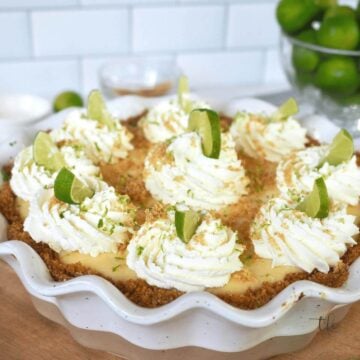
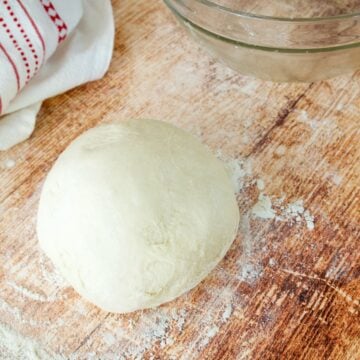

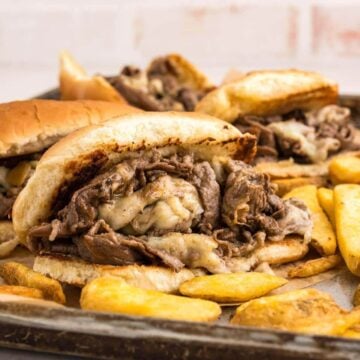
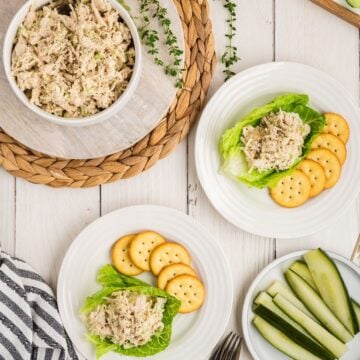
Patty
I made this alongside the crock pot corned beef and it was so delicious! I didn’t have any buttermilk, so followed the directions to make my own. I replaced some buttermilk with oatmeal stout as suggested and 😍! It came together easily and quickly, I will definitely be making again and again!
Love your twists, Patty! Thank you so much!
Mary S.
I made the recipe as is, it was delicious and easy to make. Can I bake it in a load pan instead?
I have never tried it but I am pretty certain you could Mary! Not sure if it will take more time or less, I’m thinking a little more since it’s less surface area. But start checking for doneness at the earlier time.
Suzy D.
This is terrific! Nicely chewy, as I had hoped, and very flavorful. I was out of whole wheat flour and wheat bran, so replaced the whole wheat flour with whole wheat pastry flour, and to compensate for its lower protein content, replaced the unbleached all purpose flour with unbleached bread flour. I used ground flax seed instead of wheat bran, and replaced about 2 tbs. of the milk with Guinness extra stout.
YAY! Love your tweaks to make it work for you — way to go! YUM! I have a Guinness Brown Bread recipe too you may want to try! Thanks again for your kind comment, Suzy!
Maria
Back from Ireland and the breads in the oven. I’m just curious why the cast iron called for a lid?
Hi Maria, oh gosh that auto filled on the suggested equipment. No lid required. Tho it’s handy to have if you are buying the pan anyway! Hope you loved the bread!
Susan Harmon Becker
Just returned from a month long stay in Ireland–the north west coast, County Mayo. Ate Irish brown most days for breakfast and/ or with a bowl of soup at the local cafe. Your recipe is authentic-thank you. I did add 3 tablespoons of melted butter into the dough–made the dough richer and softer. Very easy to read the recipe and great tips. My brother in law (lives in Donegal) has a very similar recipe-he suggested adding the butter. This is the first time on your website Kathleen–Thank you
Thank you so much, Susan. I’ll going to try with the butter too! That sounds amazing. As does your month long trip!
Georgina
Any high altitude adjustments needed for this recipe? I’m at 5400’
No adjustments are needed Georgina, it works great for me at 5280, it should for you too!!
Jules
I love my bread and couldn’t wait to try this recipe. I just loved the texture and the delicious sweetness from the molasses.
Thank you Julie!
justin
Daughter is into baking now and tried this one, was a hit in the morning.
Thank you so much, Justin!
Vicky
This bread is so hearty! I loved that I already had all the ingredients at home to make it. It is so yummy warmed up and sliced with some butter!
Perfect, thanks, Vicky!
Charles
Hi,
Your Irish Brown Bread sounds great with Corned Beef and Cabbage on St Patty’s! Thanks for sharing!
Perfect with Corned beef and cabbage as well as any hearty stew or soup, Charles, thank you!
Kushigalu
This Irish brown bread looks perfect and gorgeous. Thanks for the recipe.
You are so welcome!
Diana Reis
This is a great recipe. Excellent tips for getting it just right.
Thank you, Diana!